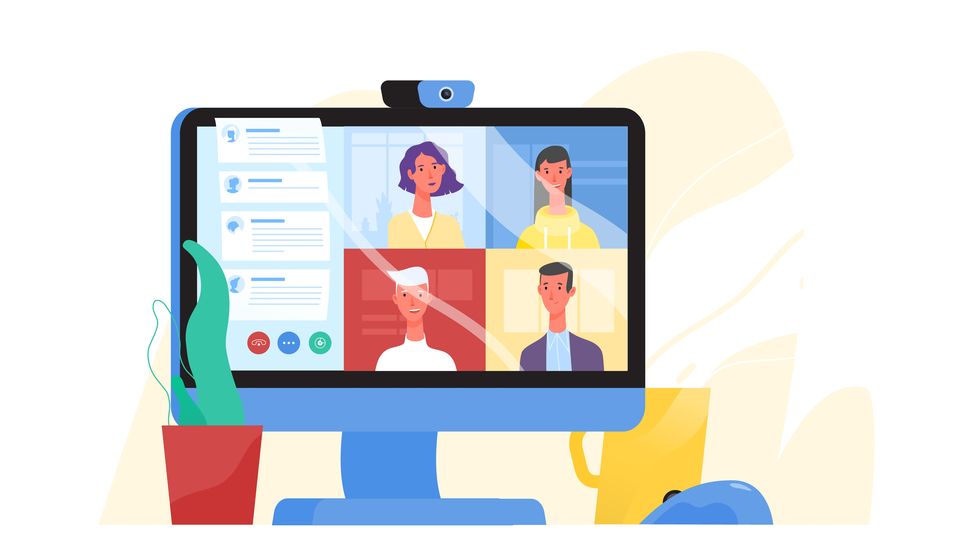From computers to communities: how remote technology will transform rural neighbourhoods
Remote collaboration tools have been implemented successfully through the pandemic by virtually all sectors

One year into the pandemic, and the way we live, work and play looks vastly different from anything we have previously experienced. Overnight, we received orders to stay at home, save lives and protect the NHS. Business leaders and public sector organisations across the country were faced with the challenge of transitioning their workforces to online and remote working, virtually without notice. Retail and hospitality – amongst many other industries – closed shop immediately, faced with their own uncertainty of what the future would hold. And the healthcare industry was confronted by the most catastrophic pandemic seen in a generation. No matter where you worked, what industry you worked in, or what your work environment looked like, the Covid-19 pandemic flipped it on its head.
The sudden change raised questions; can we do it? Will our network infrastructure hold up? Will this help or hinder productivity? How will we juggle work/life commitments? Now that we’re well into the pandemic, those questions – and the limitations and befits of remote working – are clearer. Yes, we can do it. And although we witnessed unprecedented demands on the network, it only reinforced the resilience of our network to manage such levels of traffic. And there’s been no downfall in productivity due to home working, with majority of workers in multiple studies say they’re just as productive at home.
- Here's our list of the best VoIP services right now
- Check out our list of the best video conferencing services around
- We've built a list of the best VoIP phones available
Philip Baulch is Technology Director at BT Enterprise
Perhaps one of the biggest questions raised from the past year is the long-term consequences on communities from this change in working patterns. Where before 5 – 7% of the workforce may be working remotely, a more permanent shift to 15-20% has profound impacts on urban economies. We’re seeing far fewer people commuting between home and work. This has significant social and economic consequences including on transportation, retail and hospitality in urban centres, demand for office real estate, and other consumption trends.
The impacts of the pandemic coupled with the acceleration of remote working has also forced many to reconsider more permanent shifts. We’ve seen a change in priorities, with new research from Rightmove indicating that over half of current Londoners are looking to buy property outside the capital.
As more people start to transition out of urban locations, we’ll start to see the regeneration of rural and remote areas. Remote working – or even a hybrid approach – means that people no longer need to commute to their office locations, and can invest their time and energy into their local communities, whilst supporting the UK’s net zero carbon ambitions. This will also revitalise local authorities and prompt them into working with their partners to reshape public services around the citizens and communities that use them. This is what we call the “Digital Fabric”, where a technology solution -- devices, data, skills and applications - can be deployed by local governments to respond to a number of community issues, whether that’s providing better access to healthcare, more effective education for youth, and better digital infrastructure to help meet the demands of those working remotely.
One example we’re seeing of this is in North Lanarkshire. Cumbernauld is the second most digitally deprived town in North Lanarkshire with weak fibre infrastructure. But with the sharp increases in remote technology, NLC recognised the benefits of a digital fabric solution for its community. NLC invested in the UK’s first 5G immersive classroom to support students who do not respond to traditional methods of learning. The immersive classroom uses 5G technology to livestream content on all four walls in a 360-degree projection. Students who have not travelled beyond their neighbourhood can appear virtually on top of the mount Everest on in an African safari without stepping outside the classroom. In the future, the same remote technology can be applied beyond education; to healthcare services, to the manufacturing sector, and to create more immersive experiences in a corporate setting. Suddenly, one technology solution can be used at scale to solve several community issues.
Whilst this is just one example, it demonstrates how remote technology that have accelerated in the wake of the pandemic not only benefits businesses but can also be used within the community to support local and regional citizens. As the UK on a whole continues remote working, more people will start to reconsider their priorities and leverage remote technologies to add flexibility to their own lives. And most importantly, it will empower local authorities to start thinking about how they can adopt remote technology to enhance the lives of local citizens. Whilst the long-term effects of remote working have not yet fully been realised, we’re already starting to see how it is supporting growth and economic rejuvenation in local places – in fact, we’re only just scratching the surface.
Are you a pro? Subscribe to our newsletter
Sign up to the TechRadar Pro newsletter to get all the top news, opinion, features and guidance your business needs to succeed!
- Here's our list of the best project management software
Phil Baulch is the Technology Director for BT Enterprise, leading future technology strategy and innovation for BT’s public & corporate sectors. He previously held the role of CIO for BT's public and corporate sector business for 4 years. He is responsible for emerging and future technology innovation, trialling and down-streaming of leading-edge solutions to help customers deliver game-changing digital transformation, customer experience and digital working. With over 20 years of CIO and executive-level business transformation experience Phil is well placed to help customers define and deliver digital transformation in complex environments using leading-edge technology. He has strategic vision mixed with an exceptional track record in delivering transformation both at scale and using start-up innovation methodologies. Phil’s passion stems from the role technology and innovation can play in enabling opportunity and creating a better world.













